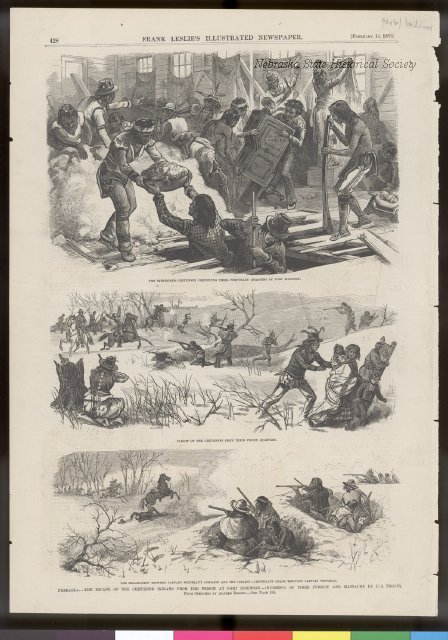Nebraska Historical Marker: The Cheyenne Outbreak (Sioux)
Location
U.S. 20, Harrison, Sioux County, Nebraska
View this marker's location 42.653184, -103.4972
View a map of all Nebraska historical markers, Browse Historical Marker Map
Marker Text
On September 9, 1878, after a year of suffering on an Oklahoma reservation, some 300 Northern Cheyenne Indians began a trek back to their homeland. Dull Knife's band of 149 Indians were captured and taken to Fort Robinson. For months they refused to return to their hated reservation. Captain Wessels, Commanding Officer at Fort Robinson, imprisoned the Indians in a log barracks and attempted to starve them into submission. Using the few weapons they had smuggled into the building, the younger warriors began the Cheyenne Outbreak about 9:00 p.m., January 9, 1879. After a desperate running battle on the snow-covered parade ground, the Indians managed to follow the banks of the White River, scale the cliffs and escape. Unable to find horses, the Cheyenne eluded pursuing troops for 12 days by heading northwest through the rough terrain of the Pine Ridge. Soldiers discovered their hiding place on Antelope Creek January 22, but the Indians refused to surrender. During the outbreak, 64 Cheyenne and 11 soldiers were killed. More than 70 were recaptured and several escaped. The number of casualties made the Cheyenne Outbreak one of the major conflicts of the Indian Wars.
Further Information
Bibliography
Roger T Grange Jr, “Treating the Wounded at Fort Robinson,” Nebraska History 45 (1964): 273-294
Marker program
See Nebraska Historical Marker Program for more information.

